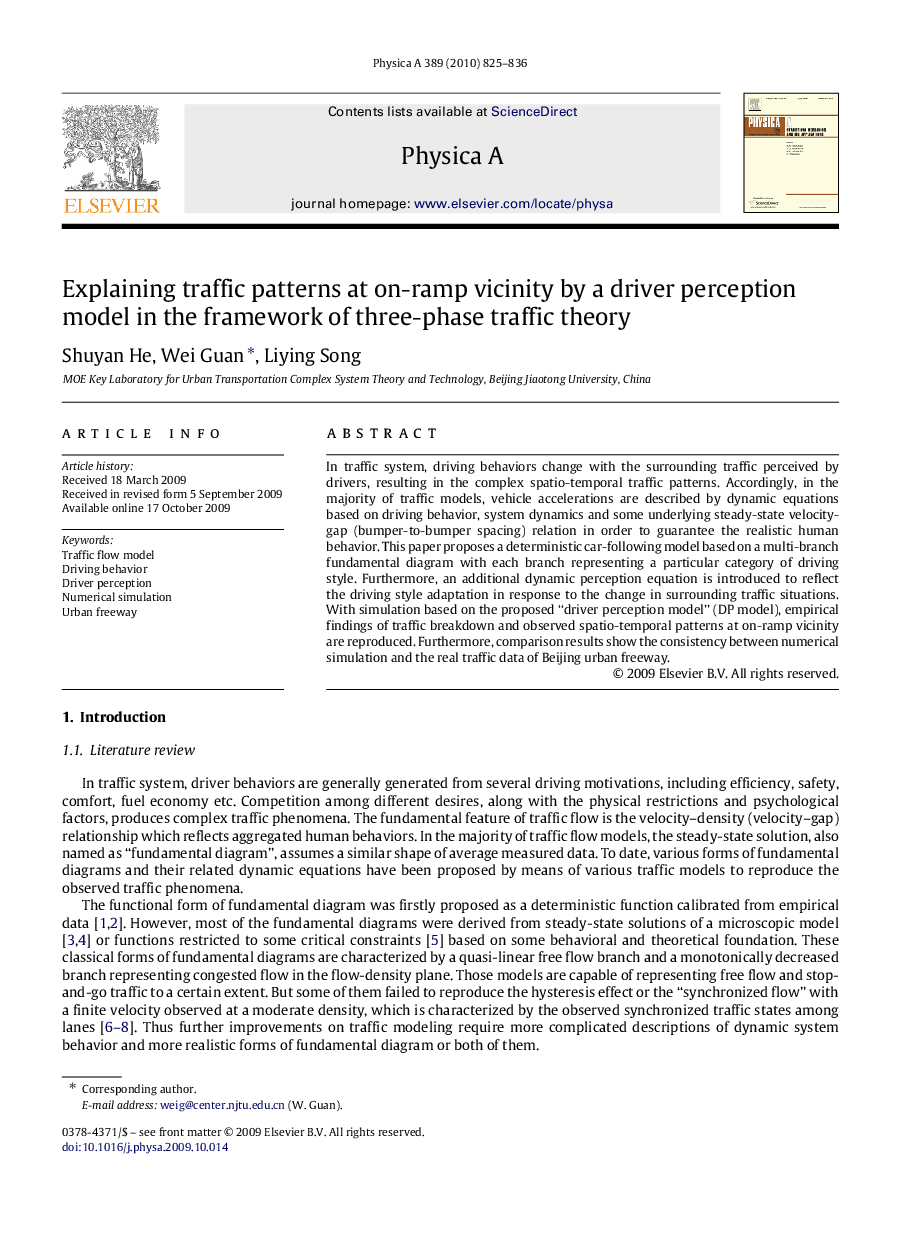| Article ID | Journal | Published Year | Pages | File Type |
|---|---|---|---|---|
| 979222 | Physica A: Statistical Mechanics and its Applications | 2010 | 12 Pages |
In traffic system, driving behaviors change with the surrounding traffic perceived by drivers, resulting in the complex spatio-temporal traffic patterns. Accordingly, in the majority of traffic models, vehicle accelerations are described by dynamic equations based on driving behavior, system dynamics and some underlying steady-state velocity-gap (bumper-to-bumper spacing) relation in order to guarantee the realistic human behavior. This paper proposes a deterministic car-following model based on a multi-branch fundamental diagram with each branch representing a particular category of driving style. Furthermore, an additional dynamic perception equation is introduced to reflect the driving style adaptation in response to the change in surrounding traffic situations. With simulation based on the proposed “driver perception model” (DP model), empirical findings of traffic breakdown and observed spatio-temporal patterns at on-ramp vicinity are reproduced. Furthermore, comparison results show the consistency between numerical simulation and the real traffic data of Beijing urban freeway.
